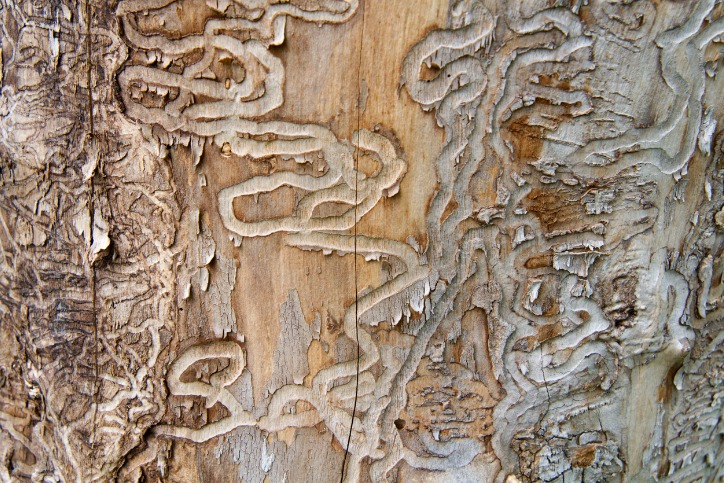Florida is home to a plethora of insect and bug species, some helpful, some harmless, and some of which can cause serious damage to your trees. Though most Florida tree pests target unhealthy trees, others may cause problems for a perfectly healthy tree. The last thing anyone wants is to lose a beautiful tree to a pest infestation. Accordingly, to help property owners keep their trees healthy and beautiful, our experienced tree service experts have compiled the following guide on common tree pests and how to spot them.
Contact True Cut Tree Service, Inc. today to schedule a free tree care assessment or learn more about our professional tree services!

Dogwood Borers
The dogwood borer is a small clear-wing moth with yellow and black bands across its abdominal segment, appearing similar to a wasp. Female dogwood borers notoriously lay their eggs on tree bark, and when they hatch, the larvae burrow into living wood through wounds in the tree. If these pests are left uncontrolled, they can compromise a tree's structural integrity, impairing the progression of new growth. An infestation of dogwood borers can even cause trees to become permanently disfigured and may kill them within 2–3 years.
Aphids
Aphids are soft-bodied insects that suck plant sap from terminal growth leaves, causing tree leaves to wilt, turn yellow, and die off. It can be difficult to spot aphids since adults rarely exceed a quarter inch in length and come in various colors, including black, gray, light green, and pink. Aphids reproduce rapidly and can overwhelm trees with their colonies. Curled, stunted, yellowed, and sap-covered leaves and stems are some of the most common signs of aphid infestation property owners should watch for.
Bark Beetles
Bark beetles resemble southern pine beetles and make holes in the bark that look like buckshot. The continuous damage from the beetles burrowing underneath a tree’s bark can slow the tree’s growth by hindering its ability to supply nutrients and water throughout its structure. A tree may be suffering from bark beetles if its leaves and needles slowly change color or tree failure occurs.
Eastern Tent Caterpillars
The eastern tent caterpillar prefers hardwood shade trees, such as oaks and sugar maples. In the winter, these insects can lay approximately 400 eggs with a varnish-like black coating. In the spring, the larvae hatch and spin silk-like tents on tree limbs. In their larval stage, eastern tent caterpillars are black with a single white stripe running down their back. The adults are reddish-brown and have two pale diagonal stripes on each forewing. These insects are notorious defoliators, which means they cause trees to lose their leaves. While this may not seem dire, consecutive defoliation weakens the tree and leaves them vulnerable to other pests.
Gypsy Moth
The gypsy moth, also known as the Lymantria dispar, is an invasive pest and one of the most infamous defoliators in the nation. This foliage-devouring insect is native to Europe but was introduced to the Americas in 1869 and has been spreading rapidly throughout the U.S. and Canada since. The gypsy moth is fond of hardwood trees, such as elms, oaks, and maples, and can be a major nuisance in residential areas as well as forests. The larvae of gypsy moths hatch from tear-drop-shaped, yellowish eggs in the springtime and can cause complete defoliation of affected trees in a matter of weeks when left untreated.